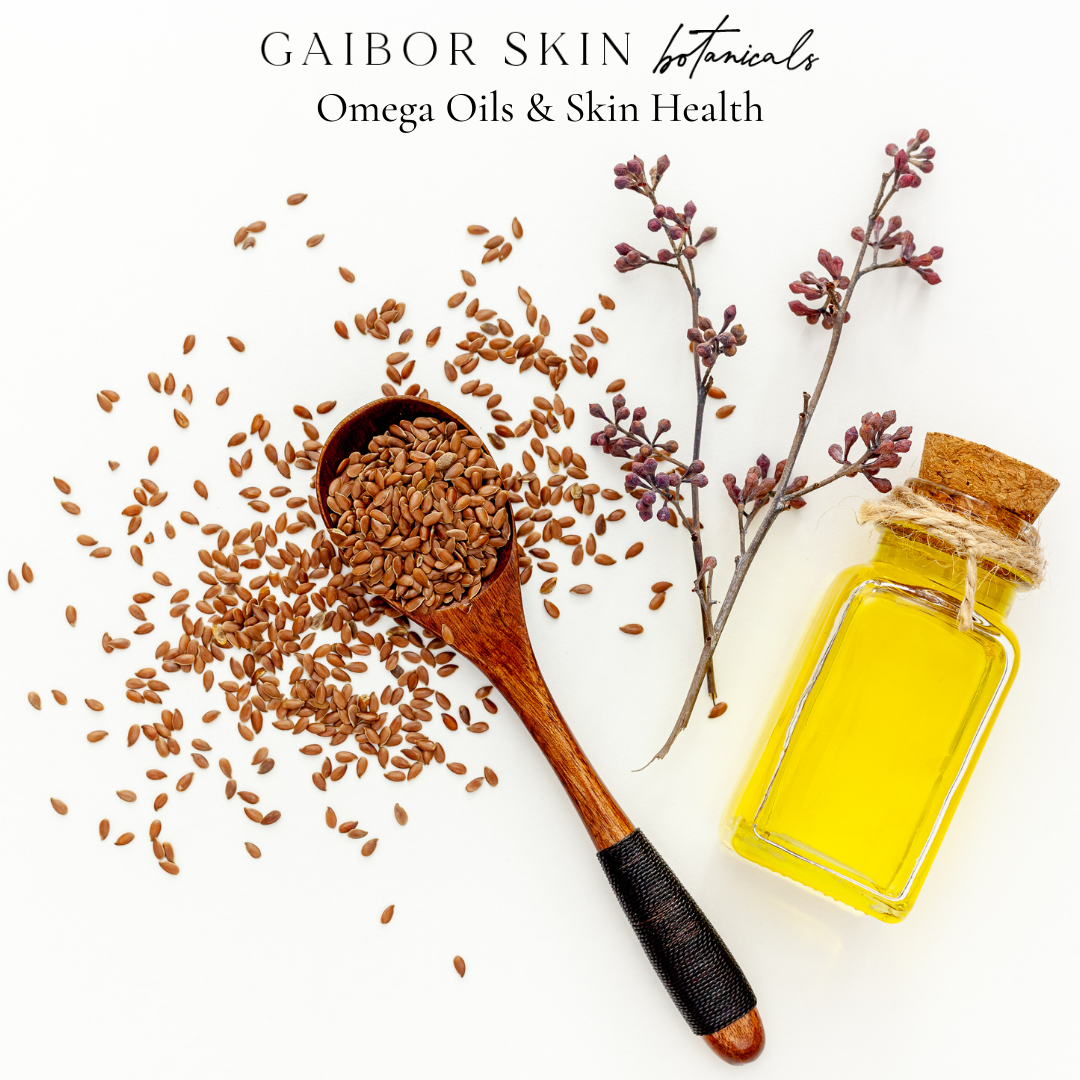
Omega Oils & Skin Health
By Jacqui Gaibor
During colder and drier weather, it's helpful to ensure that both our skin care products and our diet, support skin hydration and oil production. Whilst our body manufactures many fats for a range of functions, including the fats found in our skin such as saturated fatty acids, cholesterol and ceramides, we are not able to make the essential fatty acids (EFA) which includes linoleic (an omega-6 fatty acid) and alpha-linolenic (an omega-3 fatty acid). These fatty acids must be supplied by the diet. Of the two, our modern Western diet is typically much higher in omega-6 fatty acids than omega-3 fatty acids.
Skin Health
Regarding skin health, 10-15% of our skin’s lipid matrix is composed of EFA. EFA play an important role in normal skin function and appearance. As components of the skins’ lipid matrix, these fats support the skin structural integrity to provide barrier function and protection and contribute to moisture content and elasticity of the skin. For this reason, signs of EFA deficiency include dry, scaly skin, brittle hair and nails and poor wound healing. It’s worth noting that the use of harsh skin care ingredients and over-exfoliation is associated with depleting the fats within the lipid matrix.
Sources
Topically, Rosehip, Seabuckthorn Berry, Argan, Evening Primrose, Jojoba, Hemp Seed and Tamanu oils contain good concentrations of the omega oils. Taking Seabuckthorn Berry as an example here, the botanical name is Hippophae from the Greek hippos (horse) and phaos (shiny). The Ancient Greeks used to feed their horses Seabuckthorn berries to make their coats gleam! Not surprising given the high concentrations of omega -3, -6 and -7 in the oil! I’ve included this nourishing extract in the Antioxidant Moisturiser for its emollient and skin protective actions.
Nutritionally, foods high in omega-6 oils (linoleic acid) include liquid vegetable oils such as olive, safflower and soybean oil, meats, dairy and eggs. Foods high in omega-3 oils ( alpha-linolenic acid) include salmon, sardines, walnuts, chia seeds, olive oil and flaxseed. To support the health promoting effects of omega oils, increasing dietary intake of the omega-3 rich foods is encouraged. Amongst populations who consume a diet high in omega-3 rich foods, a reduced incidence of certain chronic diseases, particularly cardiovascular disease, is observed.
With my focus on whole food nutrition and with the easy availability of omega-3 rich foods in Australia, I would encourage increasing dietary intake of foods rich in omega-3 oils over supplementation amongst healthy people.
References
Kaur N, Chugh V, Gupta A, Essential fatty acids as functional components of foods – a review. J Food Sc Technol. 2014. Oct;51(10):2289-2303
Skolnik P, Eaglstein WH, Ziboh VA. Human essential fatty acid deficiency: treatment by topical application of linoleic acid. Arch Dermatol. 1977 Jul;113(7):939-41. PMID: 406855.
Whitney E, Rady Rolfes S, Crowe T, et al. Understanding Nutrition. 4th ed. Cengage Learning, Melb, Australia. 2019
Essential Fatty Acids and Skin Health. Linus Pauling Institute. Available from: https://lpi.oregonstate.edu/mic/health-disease/skin
Omega-3 Fatty Acids. Fact Sheet for Health Professionals. Available from: https://ods.od.nih.gov